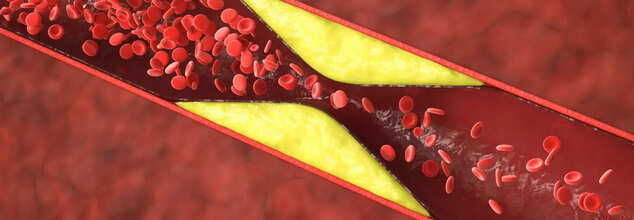
Vitamin D and the role in health, skin cancer prevention
How Vitamin D Helps Protect Your Skin And Lower Cancer Risks Naturally
Known as the "sunshine vitamin," Vitamin D is essential to healthy skin, but one aspect of vitamin D's association with skin cancer is somewhat intriguing. Although some level of sun exposure is necessary for your body to make vitamin D naturally, it's informative to understand the balance of these benefits with the increased risk of skin cancer due to excessive UV radiation.
Here's how vitamin D supports your skin and how it may impact the risk of skin cancer:
1. Skin Barrier Protection
Vitamin D is useful for the creation and proper functioning of outermost skin layer cells called keratinocytes. It acts as a protective shield against excessive loss of water; otherwise, the body would become too dry, and it protects the body from harmful environmental pollutants and pathogens.
It obviously helps minimize risks of catching infections and eczema or psoriasis. More importantly, this barrier function is crucial to maintain the integrity of the skin, and thus might lower the risk of developing some types of skin cancers by minimizing damage through environmental stressors.
2. Immune System Modulation
Vitamin D has a critical role in regulating the immune system, which is an important factor for the prevention of skin cancer. The immune system is always on the lookout for abnormal growth of cells or other potentially cancerous changes. Vitamin D enhances the activity of these immune cells: macrophages, monocytes, and T cells; which are essentially required in the body's defense systems.
It enables a potential, proper immune response to identify and destroy precancerous cells prior to full-blown skin cancer like basal cell carcinoma or squamous cell carcinoma.
3. Antimicrobial Activity and Inhibition of Skin Cancers
Vitamin D has antimicrobial effects, contributing to its protection of the skin from infection. Though infections have not traditionally been associated with skin cancer, chronic inflammation and continuous infection resulting from repeated or neglected infections are facilitating to carcinogenesis.
Vitamin D can ensure that the skin is more resistant to chronic inflammation and infection, which could thereby reduce its risk for cancer.
4. Regulation of Sebaceous Gland
Vitamin D controls the functioning of the sebaceous glands because they produce sebum. This biological oil feeds the skin by keeping the skin hydrated and at the same time protects it from environmental factors. Adequate rate of sebum's production, which vitamin D helps maintain, can thus prevent acne and may later cause damage to the skin.
Even though the relationship between vitamin D and acne is complex, keeping in view the general maintenance of skin health by proper oil regulation will prevent the skin from becoming more susceptible to cancerous changes that result from chronic irritation or inflammation.
5. Wound Healing and Skin Cancer Recovery
Vitamin D is crucial for wound healing, an essential element in recovery after injury to the skin, which can include surgical removals of lesions with skin cancer. Vitamin D promotes the expression of cathelicidin, an antimicrobial peptide, which is essential for tissue repair and regeneration of the cutaneous barrier.
Vitamin D status supports the recovery from antitumor therapies, such as surgery or radiation, by enabling rapid skin regeneration and reconstitution.
Ayurvedic Perspective on Vitamin D and Skin Health
In Ayurveda, the vitamin D level is associated with a state of equilibrium of the doshas of Vata, Pitta, and Kapha in the human system. An Ayurvedic concept toward health suggests prevention of diseases by exposing one's body to both natural sunlight and nutritional food containing this utmost requirement.
While it is always stated that the primary source of vitamin D is the sun, Ayurveda advises the taking of foods like fatty fish, egg yolks, and fortified dairy products so as to complement this natural balance for healthy skin. Ayurvedic practices, for example, also advocate lifestyle changes to achieve optimal vitamin D levels in relation to doshic requirements of an individual, which not only aids general well-being but could reduce the chances of skin diseases such as cancer of skin.
Lifestyle Practices for Optimal Vitamin D Levels and Skin Cancer Prevention
Some of these lifestyle changes to get full benefits from vitamin D while ensuring minimum hazards to the skin or risk of causation of skin cancer include
- Moderate Sun Exposure: This is about 10 to 15 minutes of sun exposure a couple of times a week, not exposing your skin to too much UV radiation that could increase your risk of developing skin cancers. The bottom line is, about striking a balance between getting enough sunlight to stimulate vitamin D production without causing skin cells to break down.
- Vitamin D Rich Diet Intake: Consume vitamin D-rich food. This includes eating salmon, mackerel, and egg yolks and even the various fortified dairy products. All those listed provide help in maintaining the right amount of vitamin D for healthy skin and proper immune actions.
- Supplements When Needed: If you cannot obtain enough vitamin D through your diet or sun exposure, supplements will be necessary. A healthy vitamin D level is important for your overall health and sun defense, especially if you live in an area that does not offer much in the way of direct sun exposure or have diseases that impair the absorption of vitamin D.
- Balancing Sun Exposure with Skin Cancer Prevention: Sunlight is an excellent natural source of vitamin D, but high exposure to UV may increase the chances of skin cancer, specifically melanoma, basal cell carcinoma, and squamous cell carcinoma. The balance has to be achieved in obtaining enough sun for the production of vitamin D without having a lot of risk of UV.
In achieving this goal, one may benefit by sun while simultaneously reducing risk from skin cancer through application of sunscreen, protective clothing, and shaded places during the peak times of sun exposure.

Credit: Canva
India Confirms 1st Bird Flu Human Death In 4 Years—Know Everything About It
India has reported its second human fatality due to highly pathogenic avian influenza (HPAI) or bird flu, marking the first such death in four years. While bird flu infections in humans are rare, they are highly lethal, with a fatality rate of one in two cases. The most recent victim was a two-year-old girl from Palnadu, Andhra Pradesh, who passed away in mid-March after being hospitalized for over 10 days at the All India Institute of Medical Sciences (AIIMS), Mangalgiri.
The pathogen responsible for the infection and subsequent deaths was confirmed only on 31 March, following a survey by the Indian Council of Medical Research-National Institute of Virology (ICMR-NIV). According to details shared by the state government, the child, who had a habit of consuming raw chicken, was admitted to the hospital on 4 March with symptoms including fever, breathlessness, nasal discharge, seizures, diarrhea, and reduced feeding. Two days before falling ill, she had reportedly consumed raw chicken. She succumbed to the infection 12 days later.
In a statement issued on Wednesday, the state government noted that no abnormal cases of respiratory infections had been identified in the ongoing survey. However, surveillance will continue for the next two weeks, with testing arranged for any suspected cases. Union health ministry officials stated that, based on data from the Integrated Disease Surveillance Programme (IDSP), no unusual surge in influenza-like illness (ILI) or severe acute respiratory illness (SARI) cases has been observed in the district in recent weeks.
A national joint outbreak response (NJOR) team has been deployed to conduct an epidemiological investigation and provide assistance to the state.
3 States Impacted By Bird Flu
This year, outbreaks of HPAI—also known as Influenza A virus subtype H5N1 or bird flu—have been reported in Maharashtra, Karnataka, and Andhra Pradesh. The trend follows a similar pattern observed in 2024, when states such as Jharkhand and Kerala, along with the aforementioned three states, recorded widespread H5N1 infections in poultry, prompting authorities to cull thousands of birds.The Union government emphasized that "human-to-human transmission of the H5N1 virus is uncommon, and the risk of any other epidemiologically linked case being reported is assessed to be low."
India's first recorded human infection of the H5N1 influenza virus occurred in 2021 when an 18-year-old boy in Haryana succumbed to the infection within days of contracting it.
In May last year, Australia reported its first human infection with H5N1, stating that the patient had acquired the virus in India. Towards the end of 2024, the deaths of four big cats—three tigers and a leopard—were attributed to H5N1 infection.

How 'Love Hormone' Oxytocin Might Not Cause But Pause Your Pregnancy?
Oxytocin, commonly referred to as the "love hormone" because it is involved in bonding and social behavior, is now being investigated for its surprise effect on pregnancy. Although oxytocin is traditionally linked to childbirth, milk letdown during lactation, and emotional bonding, recent findings indicate that this hormone can possibly delay early pregnancy. A study on mice conducted recently has helped explain how the hormone can stop embryonic growth, which may provide new understanding of human fertility and pregnancy.
In a few mammals, such as marsupials, bats, and more than 130 others, a process called "diapause" takes place. This is a natural biological phenomenon that sees embryos suspend their development in order to wait until the right conditions prevail for pregnancy to resume. Although very uncommon and hard to monitor in human beings, clinical experience from in vitro fertilization clinics indicates that human embryos might at times show delayed implantation. One highly documented case in 1996 showed that an embryo implanted in a uterus was in a suspended state for five weeks before implantation took place.
The new research by scientists at the NYU Grossman School of Medicine investigated oxytocin's possible role in inducing this pause in pregnancy. Their results indicate that oxytocin could be a major player in controlling diapause in mice, and they raise questions about its possible role in human pregnancies.
Oxytocin-Induced Pregnancy Pause
To study the impact of oxytocin on pregnancy, scientists tested female mice who had recently given birth by letting them be mated while still lactating. The research revealed that nursing females had pregnancies that lasted about a week longer than those of the non-nursing mice. Since the normal pregnancy in mice takes only 19 to 21 days, this postponement is a drastic halt to embryonic development.
The research team then sought to determine how this pause occurred. Using optogenetics, a technique that enables the activation of specific neurons through light stimulation, they artificially triggered the release of oxytocin in pregnant mice. After five days of oxytocin stimulation, the researchers examined the mice’s uteruses and found that five out of six had embryos in a dormant state, indicative of diapause. Conversely, pregnant mice that were not administered oxytocin stimulation did not exhibit any indication of developmental arrest.
In further confirmation of their research findings, the scientists administered oxytocin to early-stage mouse embryos in the laboratory setting. They detected identical cellular alteration related to diapause, implying that oxytocin has a direct influence on suspended embryonic development.
How Oxytocin Affects Embryonic Development?
The research showed that oxytocin slows down the process through which embryonic cells convert genetic information into proteins. This process, essential for growth and development of the cell, is copying DNA instructions into RNA, which then guides protein synthesis. By suppressing this process, oxytocin puts the embryo into suspended animation.
Interestingly, scientists also learned that embryos without oxytocin receptors were still able to enter diapause, suggesting that more than one biological pathway is used to trigger the pause. Still, having working oxytocin receptors seemed to increase the embryo's chances of surviving the halted state. When oxytocin receptors in the embryos were deactivated, survival rates while in diapause fell to 11% from 42%.
Implications for Human Fertility and Pregnancy
Although this research is in its infancy, it presents exciting possibilities for human fertility studies. A better grasp of the role oxytocin plays during early pregnancy may lead to significant advances in treating unexplained infertility and recurrent miscarriage. If human embryos can enter a state of diapause, further study could reveal how hormonal or environmental influences are responsible for early pregnancy loss.
Also, these discoveries may have greater implications outside pregnancy. As oxytocin is implicated in cell survival, researchers now want to know if what it does in diapause can help understand how to keep nerve cells from dying in the developing nervous system. What stops cells from dying early on might help neurobiology and regenerative medicine advance.
Even with these thrilling findings, much remains to be answered. How long can diapause be in various species, including humans? What are other biochemical signals that cooperate with oxytocin to control embryonic development? And might this information one day lead to targeted fertility treatments or interventions?
More studies are needed to uncover these secrets. As researchers learn more about the multifaceted functions of oxytocin, its image as just the "love hormone" is changing. This potent molecule seems to play a much more intricate function in reproductive biology than has been known, and it may play a role not only in when life starts, but in when it temporarily gets suspended.
Oxytocin's role in pregnancy is turning out to be more complex than originally thought. Though still a primary force behind labor and maternal attachment, it has also recently been found to retard embryonic development, which could have far-reaching consequences for reproductive science. As more research unfolds, the hormone could provide new insights into fertility, enhance IVF success, and even prevent early miscarriage. The possibility of oxytocin-based fertility therapies is an exciting one, and future research will be important to determine how this information can be translated to human pregnancy.

Credit: Canva
These 5 Factors Could Determine How Long You'll Live—And Cholesterol Is the Least Important
A study published in the New England Journal of Medicine has listed five key factors that impact the longevity of individuals. The research tracked participants for up to 47 years, assessing how five specific factors influenced their risk of death, longevity, and the number of healthy years they could gain by altering these habits. The conclusions of this study were based on data analyzed from over two million adults aged 18 and above across 39 countries.
Five Factors That Influence Longevity
- High blood pressure
- High cholesterol
- Diabetes
- Smoking
- Bodyweight, including being overweight and underweight
Women Could Add 14 Years To Their Lives
As per the researchers, women who didn't have these five risk factors at age 50 could potentially add more than 14 years to their lives, and men could gain almost 12 additional years. Men were most affected by these factors as those with all five faced a 94% chance of dying before 90, while their counterparts without these issues had just a 68% chance. Women with all five risk factors at age 50 had an 88% chance of dying before 90, whereas those without these problems had a 53% chance.
Diabetes Is The Main Factor
Out of all the factors, cholesterol was the least impactful of all. As per the study, people who lowered their cholesterol levels could only add 1.2 extra healthy years to their lifespan. On the contrary, individuals who quit smoking could potentially extend their lives by up to six years. Women who do not have diabetes could gain an extra 6.4 years, while men without the condition might see an increase of 5.8 years. Even a slight reduction in blood pressure could lead to an additional 1.8 healthy years, and achieving a normal BMI could contribute an extra 2.6 years, with variations depending on the region.
Importance Of Lifestyle Changes
The study reinforces the importance of lifestyle modifications in extending a healthy lifespan. The researchers noted that small but consistent changes in daily habits could significantly impact longevity. For example, maintaining an optimal weight through a balanced diet and regular physical activity helps control blood pressure, diabetes, and cholesterol levels, reducing overall health risks.
Smoking cessation emerged as the most crucial lifestyle change that could dramatically influence lifespan. Quitting smoking, even later in life, significantly reduces the risk of cardiovascular diseases, lung disorders, and certain cancers, contributing to longer and healthier lives. Similarly, diabetes management through dietary changes, regular exercise, and proper medical intervention plays a vital role in preventing complications and enhancing longevity.
Regional And Gender-Based Differences
The study also highlighted variations in longevity gains based on gender and geographical regions. For instance, men were more susceptible to the adverse effects of these five risk factors than women. This disparity could be attributed to lifestyle differences, genetic predisposition, or healthcare access.
Additionally, in certain countries with high obesity rates, maintaining a normal BMI was one of the most significant contributors to longevity. Meanwhile, in regions with lower tobacco consumption, factors like high blood pressure and diabetes had a more prominent role in affecting lifespan.
© 2024 Bennett, Coleman & Company Limited

